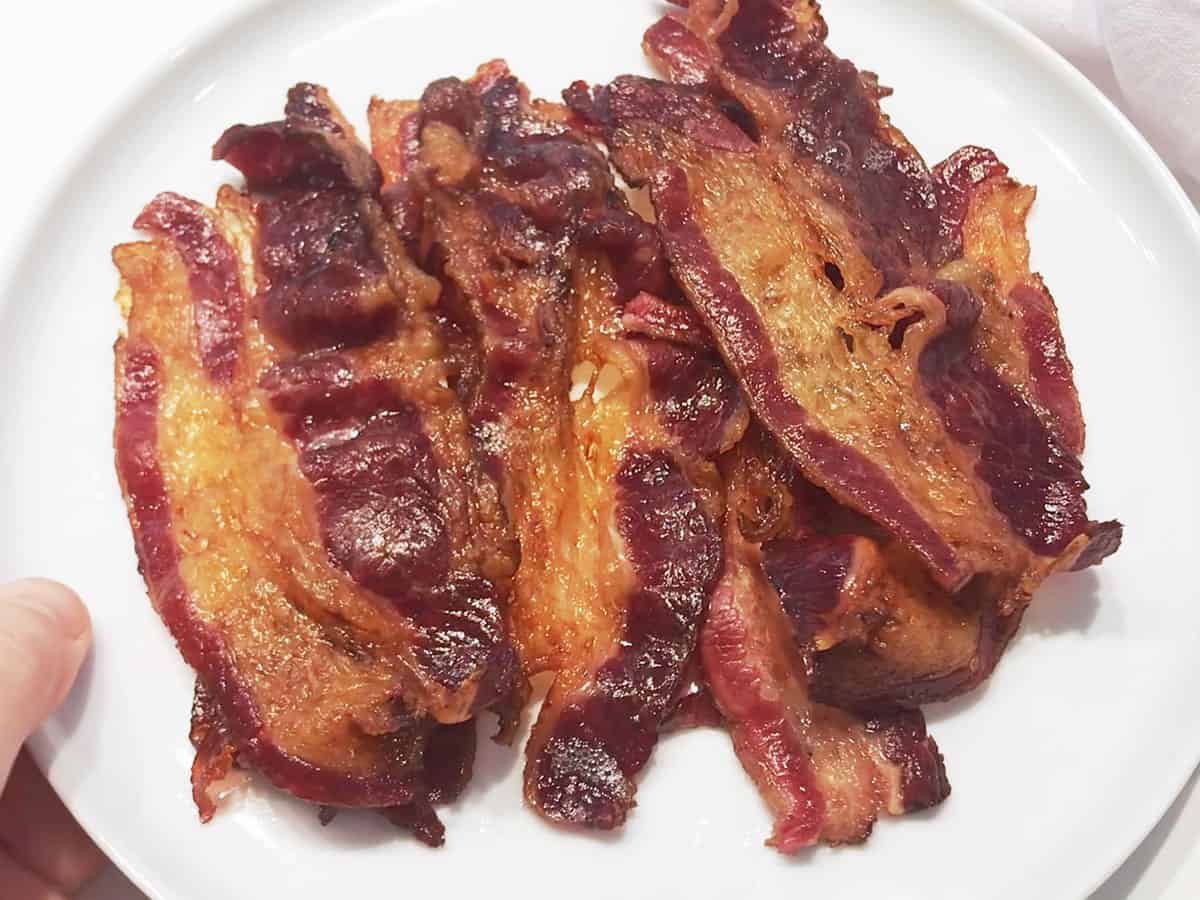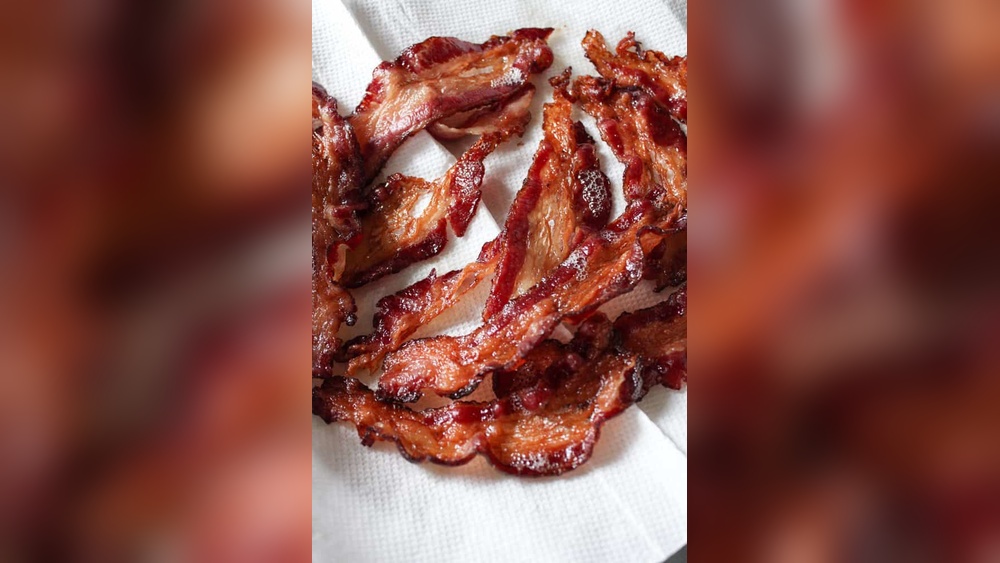Craving a smoky, savory twist on your usual breakfast favorite? Learning how to cook beef bacon can open up a whole new world of flavor for your meals.
Unlike traditional pork bacon, beef bacon offers a richer, heartier taste with a chewier texture that’s sure to satisfy your meat cravings. But cooking it just right can be tricky—too little time and it’s underdone, too much and it turns tough.
In this guide, you’ll discover simple, foolproof methods to cook beef bacon perfectly every time, whether you prefer it pan-fried, baked, or grilled. Ready to master beef bacon and impress your taste buds? Let’s dive in!
Beef Bacon Basics
Beef bacon comes from cow meat, unlike regular bacon from pigs. It has a stronger, beefy taste and is usually thicker. This makes beef bacon chewier than pork bacon. It also has less fat, which means it cooks faster and can become tough if overcooked.
Beef bacon is popular for those who avoid pork or want a different flavor. It can be cooked like pork bacon by pan-frying, baking, or grilling. Because it has less fat, it needs careful cooking to keep it tender and tasty.
| Feature | Beef Bacon | Pork Bacon |
|---|---|---|
| Source | Cow meat | Pig meat |
| Fat Content | Lean, less fat | Higher fat |
| Texture | Thicker, chewier | Thin, crispier |
| Flavor | Robust, beefy | Sweet, fatty |

Preparation Tips
Choose beef belly or brisket cuts for the best bacon. These have good fat balance and flavor. Avoid very lean cuts, as they can become dry and tough.
Store beef bacon in the refrigerator at or below 40°F (4°C). Keep it in airtight packaging to maintain freshness and prevent odors.
Handle the meat gently. Wash your hands and surfaces after touching raw beef to avoid cross-contamination. Use clean utensils and plates when cooking and serving.
Cooking Methods
Pan-frying beef bacon is simple. Heat a skillet on medium, add a little oil. Place the slices and cook, turning often. This method gives you a nice crisp outside and tender inside. Watch closely to avoid burning.
Oven-baking is great for cooking many slices at once. Preheat oven to 400°F (200°C). Lay bacon on a baking sheet with foil. Bake for 15-20 minutes. This method cooks evenly and keeps bacon flat.
Grilling adds a smoky taste. Place the bacon strips on a grill rack. Cook for 5-7 minutes per side. Flip carefully to prevent falling through the grill.
Air frying is quick and healthy. Arrange bacon in the air fryer basket in one layer. Cook at 350°F (175°C) for 8-12 minutes. Check often for desired crispness.

Achieving Crispy Texture
Optimal cooking time for beef bacon is usually between 8 to 12 minutes. Cooking too long makes it dry and tough. Check the bacon often to get the perfect crisp.
Avoiding overcooking keeps the bacon juicy and tender. Stop cooking as soon as the edges turn golden brown. Resting the bacon for a minute helps keep the crispiness.
Using a rack lets the heat circulate around the bacon. This helps in even crisping on all sides. Placing bacon directly on the pan can cause uneven cooking and sogginess.
Enhancing Flavor
Beef bacon drippings carry a rich, savory flavor perfect for cooking. Use them to sauté vegetables or fry eggs, adding a smoky depth to simple dishes. These drippings also make a tasty base for sauces and gravies.
Seasonings like black pepper, garlic powder, and smoked paprika complement beef bacon well. Sprinkle these spices lightly before cooking to enhance the meaty taste without overpowering it.
Serving Suggestions
Beef bacon pairs wonderfully with classic breakfast items like eggs, toast, and hash browns. It adds a rich, smoky flavor that enhances simple dishes. Crisp strips work well alongside scrambled eggs or folded into omelets. Serve with fresh fruit or a light salad for balance.
Incorporate beef bacon into recipes for extra taste and texture. Chop and mix it into salads, sandwiches, or pasta dishes. Use it as a topping for baked potatoes or casseroles. It also complements soups and stews by adding a savory depth. Experiment by replacing pork bacon in your favorite meals for a different twist.
Common Mistakes To Avoid
Cooking at too high heat can burn beef bacon quickly. It will become tough and lose flavor. Use medium or medium-low heat for even cooking. This helps render fat slowly and keeps bacon crispy but tender.
Crowding the pan traps steam and prevents bacon from crisping. Place bacon slices with space between them. Cook in batches if needed. This allows heat to circulate and bacon to cook evenly without sogginess.

Frequently Asked Questions
Do You Cook Beef Bacon The Same As Pork Bacon?
Cook beef bacon like pork bacon by pan-frying, baking, or grilling. It cooks faster due to less fat. Avoid overcooking to keep it tender and flavorful. Beef bacon is thicker, chewier, and has a stronger, beefy taste compared to pork bacon’s sweet, fatty flavor.
What Do You Do With Beef Bacon?
Cook beef bacon by pan-frying, baking, grilling, or air frying until crispy. Avoid overcooking to keep it tender. Use drippings for added flavor in recipes. Beef bacon offers a rich, beefy taste with a chewy texture, making it a great pork bacon alternative.
Does Beef Bacon Taste Like Bacon?
Beef bacon tastes similar to pork bacon but offers a richer, beefier flavor with a chewier texture. It is less sweet and leaner than traditional bacon.
How Do You Know Beef Bacon Is Done?
Beef bacon is done when it turns golden brown and reaches an internal temperature of 160°F (71°C). It should feel firm but not tough. Cook until crisp edges form, avoiding overcooking to prevent dryness. Check texture and color for perfect doneness.
Conclusion
Cooking beef bacon is simple with the right approach. Use medium heat to avoid toughness. Choose pan-frying, grilling, or baking for best results. Remember, beef bacon cooks faster than pork bacon. Watch it closely to keep it juicy and flavorful.
Enjoy its rich, beefy taste in your favorite meals. Give it a try and savor the difference today.

